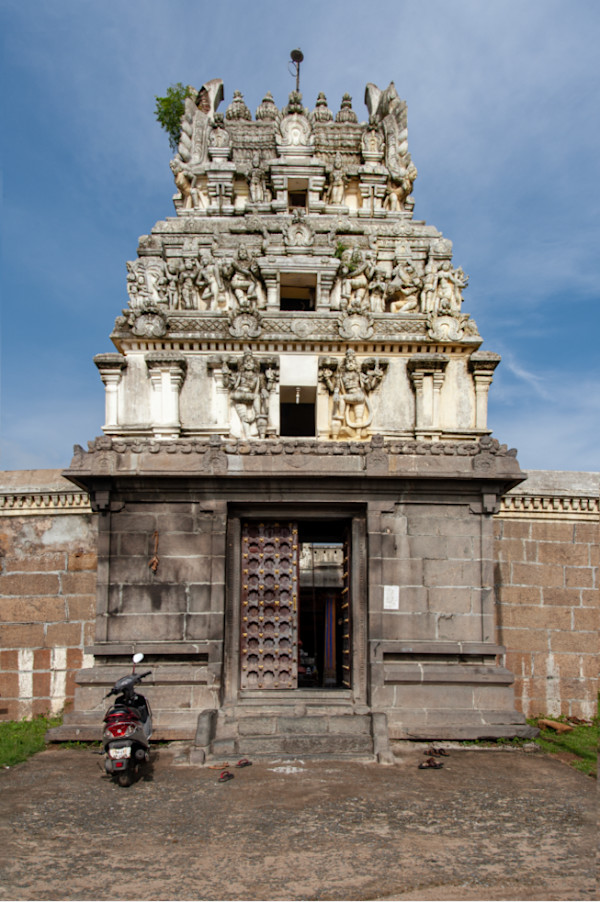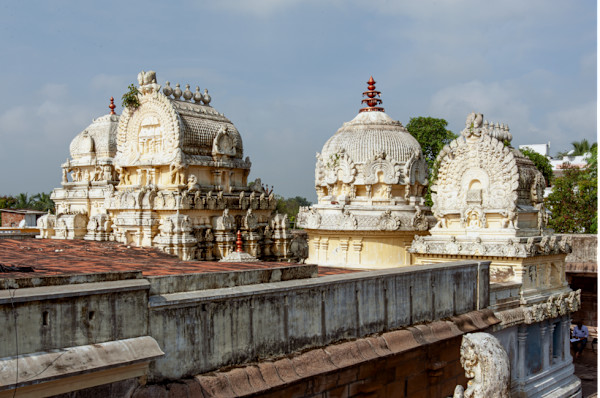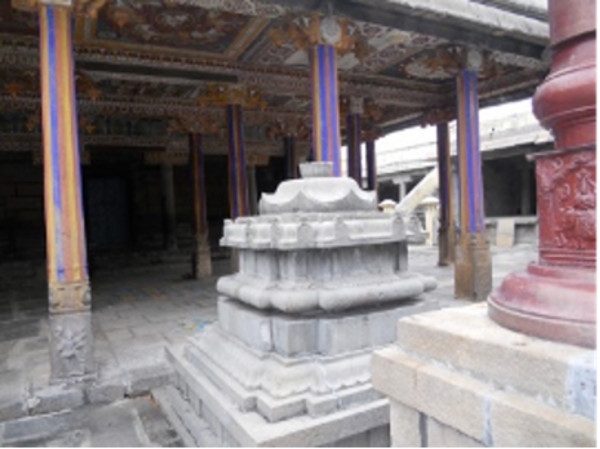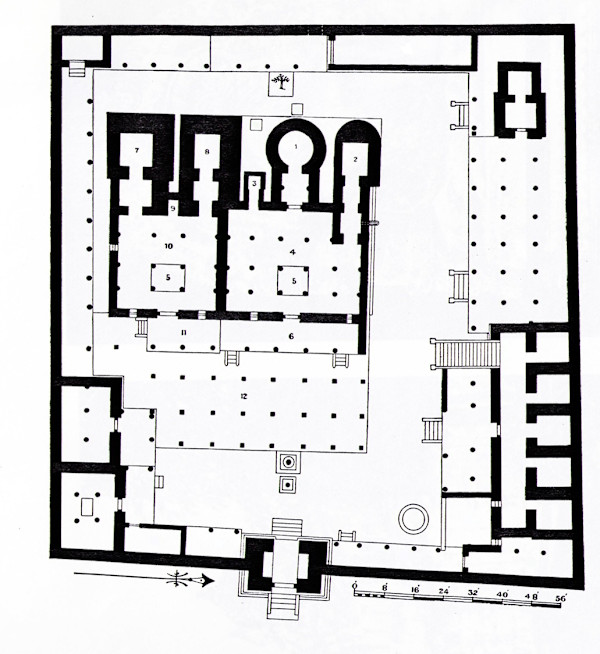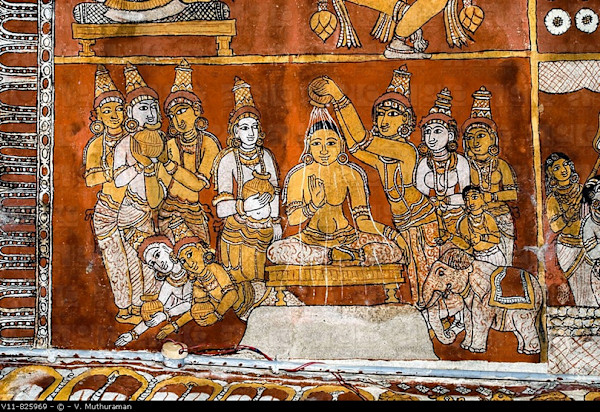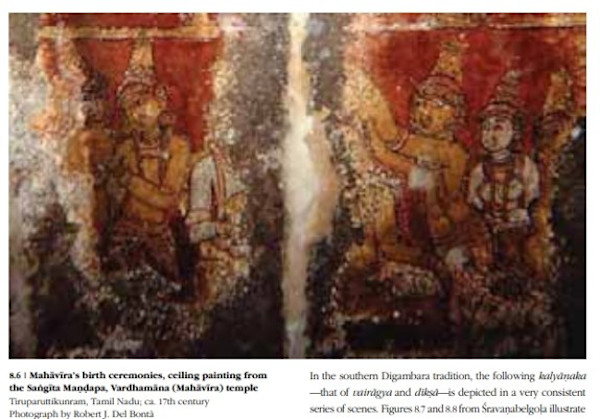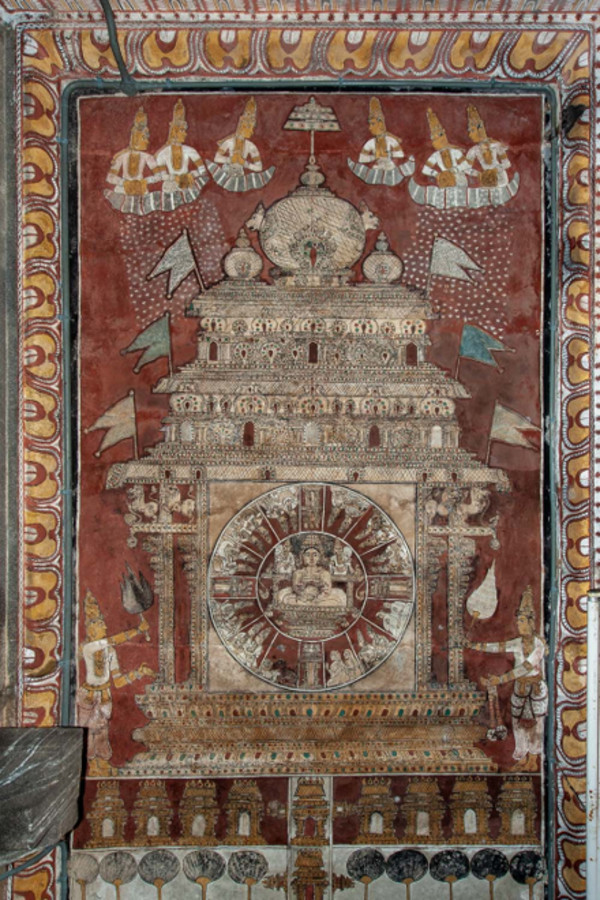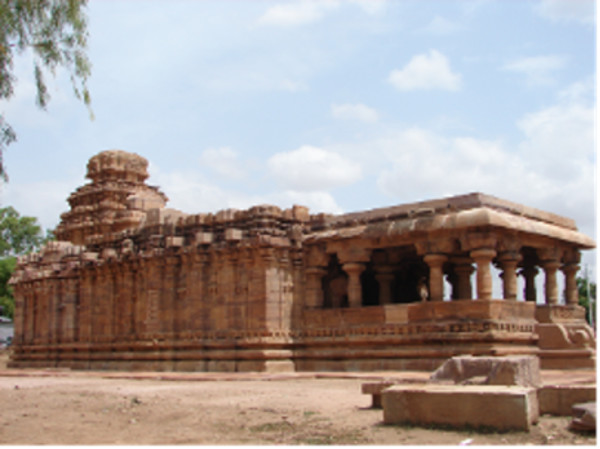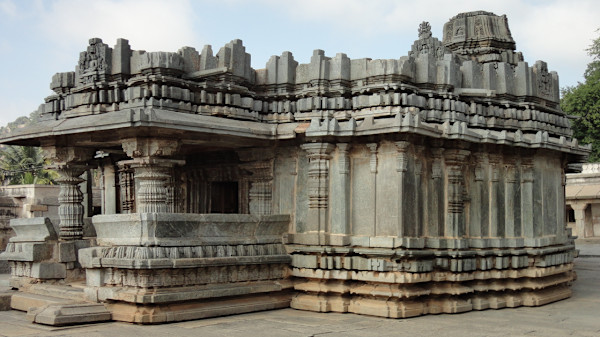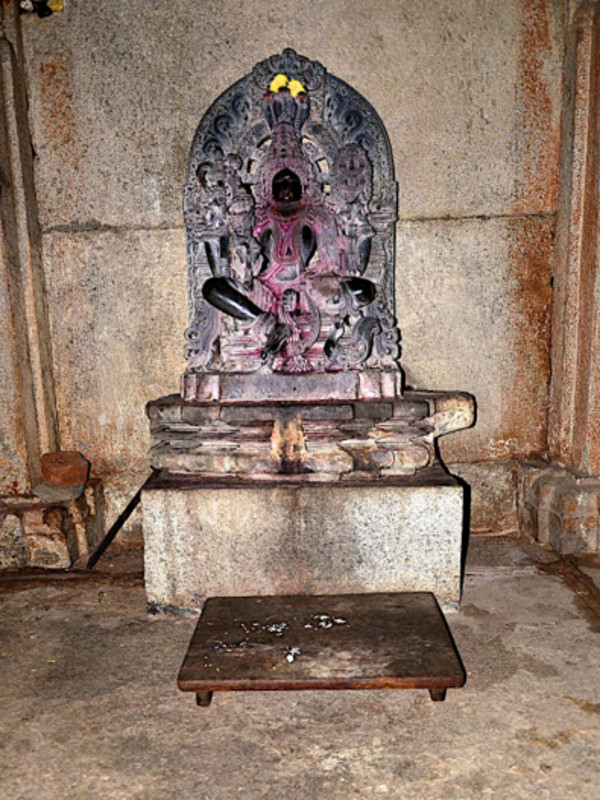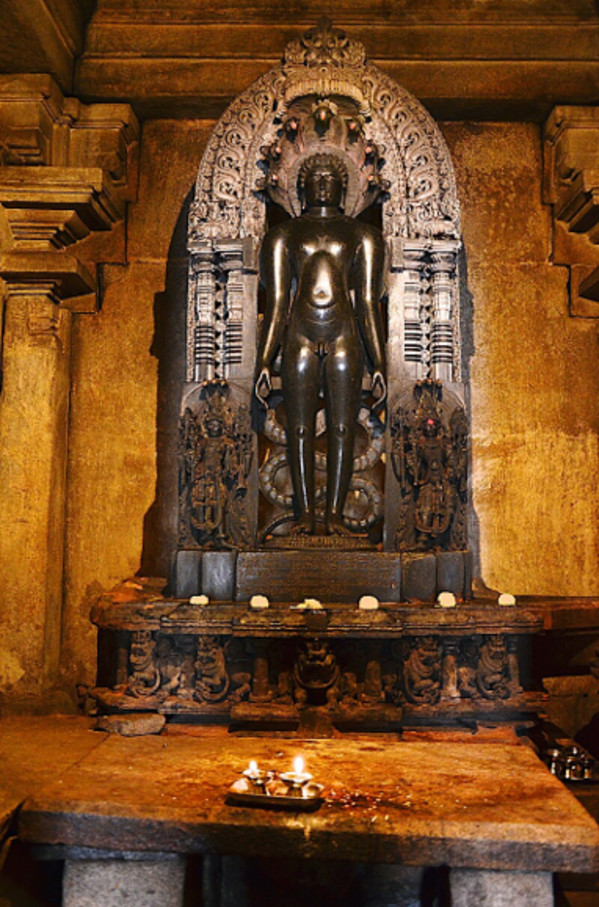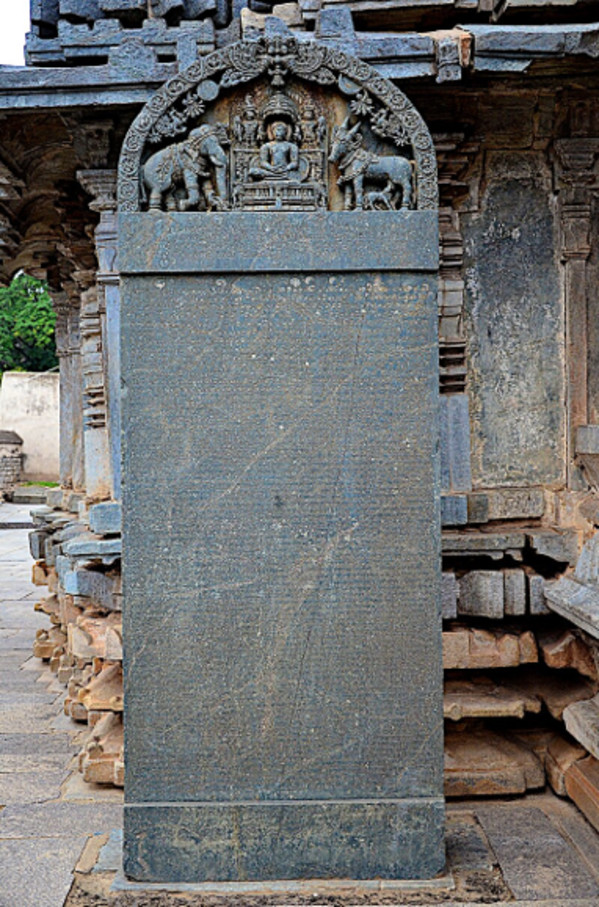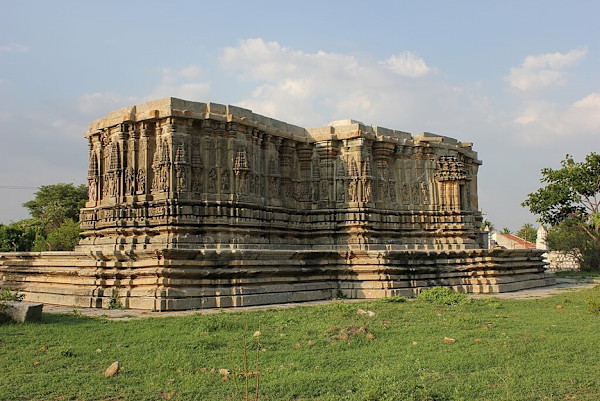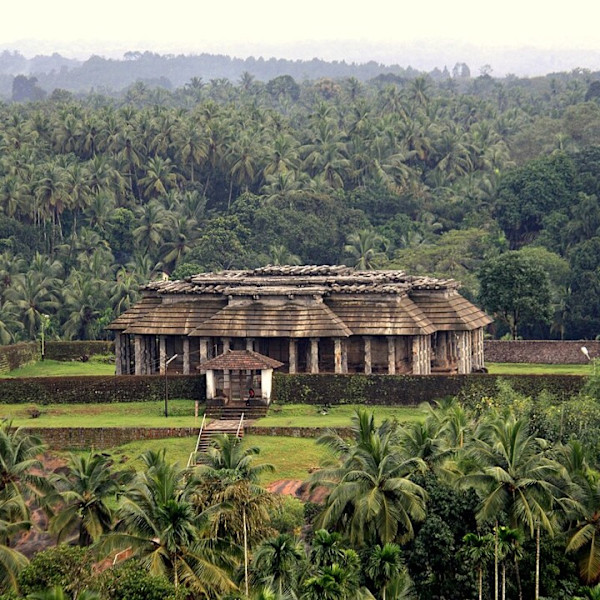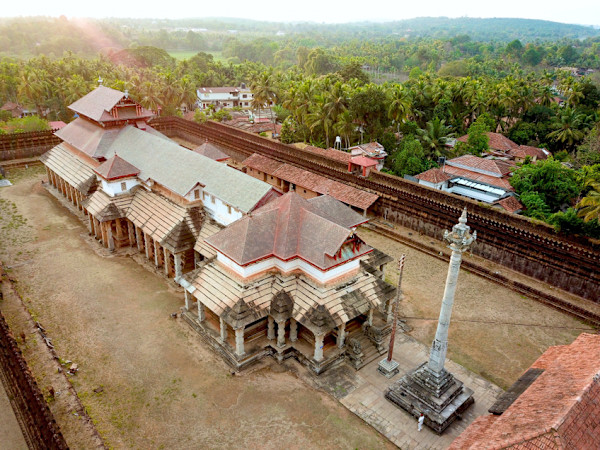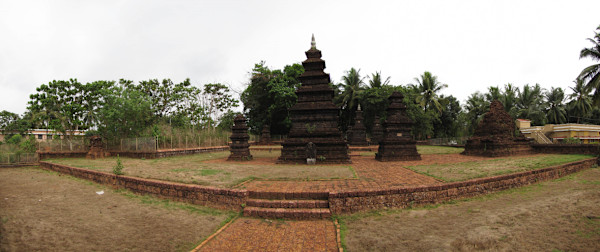Built Architecture: Southern India x
The Jain temples of South India are located south of the Vindhyas and depending on the area are constructed from red sandstone (southwest part of the Deccan plateau); talc or soapstone (western part of the Mysore plateau); marble or limestone (lower Krishna valley); and granite and gneiss (Southeast Deccan plateau and the southern part of the peninsula).
The Jain temples of this region are also characterized by the style typical of southern Indian temples, called the Dravida style. Typical of this temple style are a storeyed sanctum and a cupola top. The sanctum core or alpha vimana is elaborated with corner (kuta) and side barrel vaulted (shala) aedicules, the latter bearing smaller wall shrines (panjara). The tower or shikhara is generally crowned with a rounded unit known as a stupi, miniature versions of which are repeated at lower levels. The simplest ground plan of a southern Indian Jain temple includes a square vimana sanctum with or without a covered ambulatory around it and a pillared hall of one bay (ardhamandapa) that may be approached from the ground by a stairway. In a larger conception, the sanctum opens into an intermediate vestibule between the shrine and the hall (antarala), followed in turn by a larger closed hall with walls (gudhamandapa) that opens into an open pillared hall called mukhamandapa or rangamandapa. The number of halls and entrances depends on the needs of the temple as well as the architect’s choice. Some Jain temples have three or five sancta vimanas opening into a single hall or multiple halls.
In contrast to eastern and central India, where the arrangement of architectural components such as halls is more compact, southern temples have larger number of halls and porches with a large scope for experimentation in the placing of individual elements. Temples range from simple open air images and shrines to multiple hall temple constructions, storeyed constructions, temples with multiple subsidiary shrines and finally temple cities with multiple temples located in close proximity at one site. Here we present varied examples ranging from one of the earliest structural temples at Jina Kanchi (Tamil Nadu) to open air stupa like bhattaraka samadhis at Mudabidri (Karnataka) and a four-fold (chaturmukha) temple at Karkal near Mudabidri.
